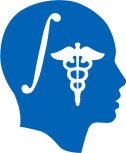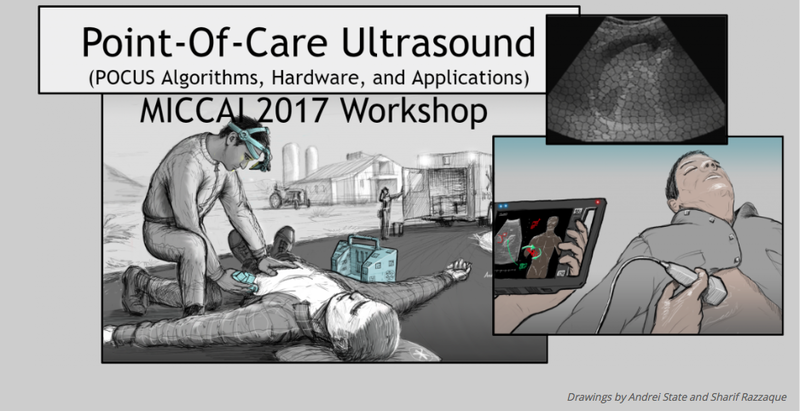Difference between revisions of "MICCAI2017 POCUS Workshop"
| Line 1: | Line 1: | ||
[[File:POCUSworkshop_miccai2017.png | 800 px]] | [[File:POCUSworkshop_miccai2017.png | 800 px]] | ||
| − | |||
{| class="wikitable" | {| class="wikitable" | ||
|- | |- | ||
| Line 6: | Line 5: | ||
|style="width:50%" |[[Image:Logo_nac.gif]] | |style="width:50%" |[[Image:Logo_nac.gif]] | ||
|} | |} | ||
| − | |||
==Introduction== | ==Introduction== | ||
Point-of-care Ultrasound (POCUS) encompasses automated US image and RF data analysis algorithms, rugged US probes, robust tracking hardware, and specialized user interfaces including augmented reality systems. The goal of a POCUS system is to guide novice users to properly manipulate an US probe and interpret the acquired data. The output of a POCUS system is typically a quantitative measure or an automated diagnosis, not a B-mode image. POCUS applications range from detecting intra-abdominal bleeding at the scene of an accident to in-home monitoring of liver health. The [https://blog.kitware.com/events/pocus-miccai2017/#hd1 POCUS workshop] will feature invited and accepted presentations, live demonstrations, and a panel discussion. The workshop is a satellite event of the [http://www.miccai2017.org/ 20th International conference on Medical Image Computing and Computer Assisted Intervention (MICCAI 2017)], Sept.10-14, Quebec City, Quebec, Canada. | Point-of-care Ultrasound (POCUS) encompasses automated US image and RF data analysis algorithms, rugged US probes, robust tracking hardware, and specialized user interfaces including augmented reality systems. The goal of a POCUS system is to guide novice users to properly manipulate an US probe and interpret the acquired data. The output of a POCUS system is typically a quantitative measure or an automated diagnosis, not a B-mode image. POCUS applications range from detecting intra-abdominal bleeding at the scene of an accident to in-home monitoring of liver health. The [https://blog.kitware.com/events/pocus-miccai2017/#hd1 POCUS workshop] will feature invited and accepted presentations, live demonstrations, and a panel discussion. The workshop is a satellite event of the [http://www.miccai2017.org/ 20th International conference on Medical Image Computing and Computer Assisted Intervention (MICCAI 2017)], Sept.10-14, Quebec City, Quebec, Canada. | ||
Revision as of 15:21, 26 July 2017
Home < MICCAI2017 POCUS Workshop
|

|
Introduction
Point-of-care Ultrasound (POCUS) encompasses automated US image and RF data analysis algorithms, rugged US probes, robust tracking hardware, and specialized user interfaces including augmented reality systems. The goal of a POCUS system is to guide novice users to properly manipulate an US probe and interpret the acquired data. The output of a POCUS system is typically a quantitative measure or an automated diagnosis, not a B-mode image. POCUS applications range from detecting intra-abdominal bleeding at the scene of an accident to in-home monitoring of liver health. The POCUS workshop will feature invited and accepted presentations, live demonstrations, and a panel discussion. The workshop is a satellite event of the 20th International conference on Medical Image Computing and Computer Assisted Intervention (MICCAI 2017), Sept.10-14, Quebec City, Quebec, Canada.
Faculty
- Stephen Aylward, Kitware
- Emad Boctor, JHU
- Gabor Fichtinger, Queens University
- Kevin Cleary, Children’s National Medical Center
- Matt Oetgen, MD, Children’s National Medical Center
- Deborah Kane, MD, Washington University
- Bradley Freeman, MD, Washington University
- Luv Kohli, InnerOptic
- Sonia Pujol, Brigham and Women's Hospital, Harvard Medical School
Logistics
- Date: Thursday September 14, 2017, 8:30 am - 5:00 pm
- Location: Quebec City convention Centre, Quebec City, Canada
